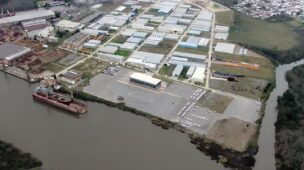Tempo de leitura: 2 minutos
There are now more than 5300 Special Economic Zones (SEZs) in the world, 90% of which, according to Unctad, are in developing and transitioning economies. Yet the question that remains is whether the growing army of SEZs is delivering on its objectives.
The Shenzhen SEZ in China — established in 1980 — has been the poster child for all zones, successfully transforming the region from a sleepy small town into a global workshop and China’s ‘window to the world’. Shenzhen has become a magnet for foreign direct investment (FDI) and jobs, and has ignited a massive process of regional industrial upgrading. However, Shenzhen remains the exception rather than the rule.
Research has cast doubts on the capacity of SEZs across emerging countries to deliver on their goals and generate more indirect economic benefits. The benefits of SEZs depend on their capacity to build forward and backward linkages with local firms. Yet, in the majority of cases, this sort of spillover is, at best, unusual.
A recent study I authored with Susanne Frick found that only 27 per cent of foreign firms in SEZs in developing countries had established some connection with the industrial fabric of the host country. Those that did frequently looked for minor inputs. The reasons behind this disconnect ranged from the non-availability of the products needed in the production process, to high prices and low quality of local production inputs.
Against this backdrop, the economic fortunes of SEZs, and of the countries promoting them, will depend on the ability of new generation zones to move beyond what until now has mostly been an enclave-like approach. Overcoming this requires going beyond providing subsidies for FDI and incorporating SEZ policies into more proactive and all-encompassing development strategies that address the systemic barriers — from skills shortages to infrastructure deficits and innovation bottlenecks — which limit the interaction between firms in SEZs and those in the places where they are located.
Some developing countries are starting to react. In Port Elizabeth (South Africa), the Coega Industrial Zone has developed links with the local economy, following programmes aimed at upskilling local small and medium-sized enterprises, and boosting their access to finance.
The Santander Free Zone (Colombia) provides English language courses to enable the local workforce to participate in the zone’s activities. These piecemeal interventions can effectively increase the capacity of the local industrial to interact with SEZ tenants, and absorb the knowledge and innovative practices they can offer.
SEZs are often expensive undertakings for governments and represent a significant opportunity cost. As such, there is an urgent need to make SEZs pay off for the host economy. Integrating SEZ policies into wider national and regional development strategies is, therefore, the way forward and could mark the beginning of a new phase where the benefits SEZs can deliver become more widespread.






Os comentários foram encerrados, mas trackbacks e pingbacks estão abertos.